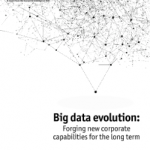 In my previous post, I discussed the characteristics of a strong data strategy, the first of which was that a formal, well-defined strategy exists within your organization. This post discusses how often (and why) your organization’s data strategy needs to be updated.
In my previous post, I discussed the characteristics of a strong data strategy, the first of which was that a formal, well-defined strategy exists within your organization. This post discusses how often (and why) your organization’s data strategy needs to be updated.
While strategy encompasses and sets the overall direction for tactics and operations, the key difference among them is that strategy must take a longer view and therefore change less frequently. Operations change slowly because they are the day-to-day activities that keep the lights on, so to speak. A lot of data management tasks are operational in nature. Examples include processing daily transactions for an enterprise data warehouse, providing application support to business users, and performing database and server maintenance. Tactics tend to look beyond the day-to-day, targeting near-future objectives, such as the next phase of an ongoing implementation. For example, a master data management system started with the location domain that’s targeting the product domain next, followed by the customer domain.

Your data strategy, like all corporate strategies, should be reviewed periodically but updated cautiously. In the United States especially, most strategic planning is fiscal-year oriented and reviewed every fiscal quarter. Your organization’s strategic direction for 2016, for example, was most likely decided in the fourth quarter of 2015 – and will likely be reviewed throughout the year near the close of each fiscal quarter (i.e., late March, June, September and December). It makes sense for data strategy to be included in these reviews. And, with the growing C-suite recognition of data as a corporate asset, many organizations are including data in their strategic planning.
Beyond periodic reviews, other events that could cause your data strategy to be updated include:
- Changes in corporate leadership, especially in the C-suite where new executives often bring new perspectives on how the enterprise should be using data.
- Corporate mergers or acquisitions, especially since they often introduce redundancies in data and data-related technologies that must be resolved.
- Changes in industry regulations, especially regarding data security and privacy since so much data is now shared beyond the boundaries of the enterprise.





